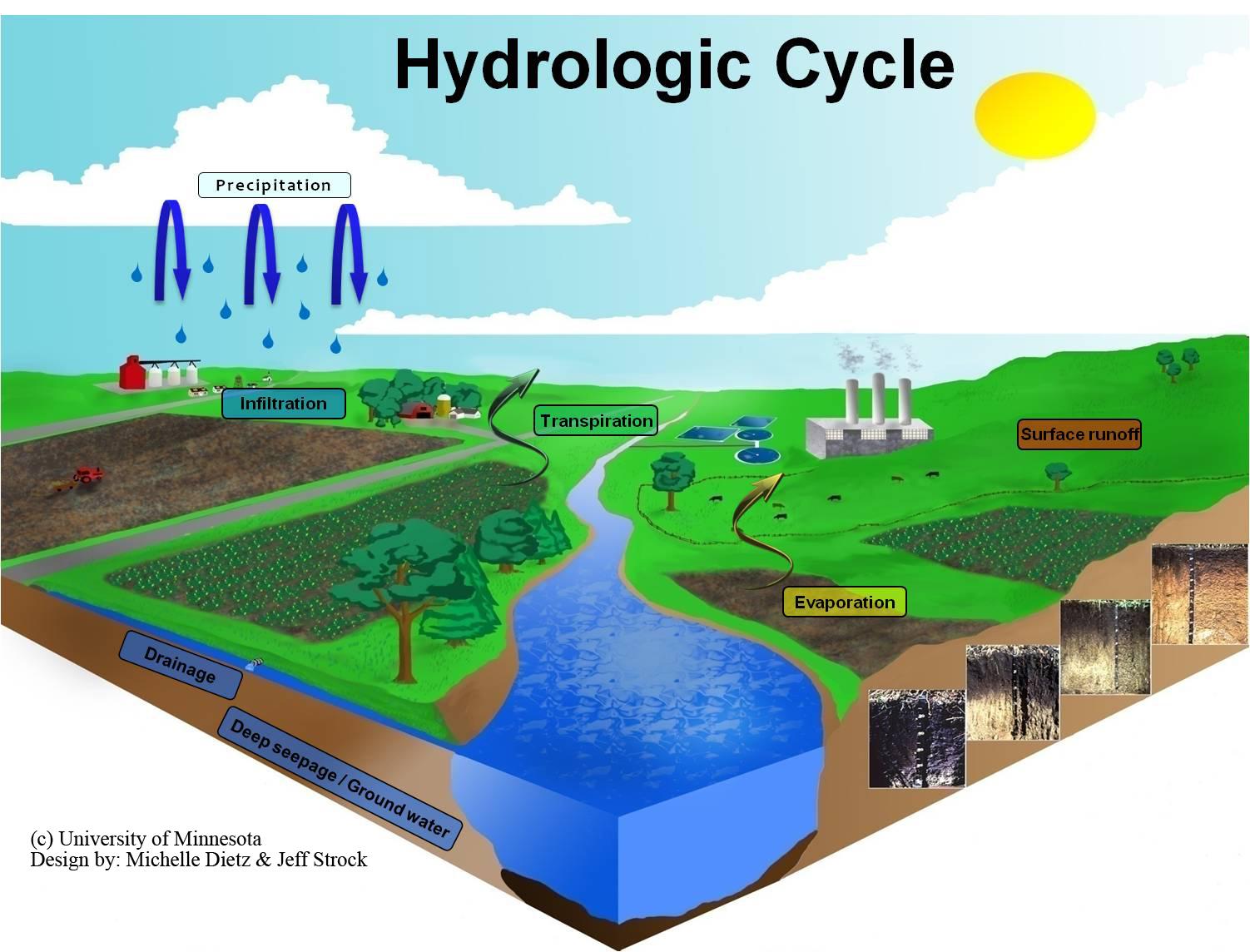Soil hydrologic function is driven by the hydrologic cycle. Soil hydrologic processes include infiltration, storage, redistribution, drainage, evaporation, and transpiration. All soil hydrologic processes occur within soil pore space. Porosity describes the relative volume of void space between soil particles that may be filled with air or water. Soil porosity depends on the texture and structure of soil. Coarse-textured soils tend to have less pore space than fine-textured soils, although the relative size of pores in coarse-textured soils tends to be larger than in fine-textured soils. The origin of some pores is due to the orientation and arrangement of soil particles; others are attributed to voids between soil aggregates, while some are the result of biological activity from growing roots, earthworms, or other burrowing insects. Soil pores differ in size, shape, and orientation and form a complex network of interconnected irregular flow channels that are difficult to characterize geometrically.
The pore network of soil may be filled with liquid or gas. The liquid fraction is composed of water and dissolved and/or colloidal products located in the pore space between soil particles and aggregates and on the surfaces of soil solids. Soil water is composed of dissolved inorganic (mineral) and organic constituents, for example, nitrate (NO3-), iron (Fe2+), manganese (Mn2+), orthophosphate (PO43-), bicarbonate (HCO3) dissolved organic carbon (DOC), humic acids and fulvic acids. The Oxidation-Reduction status and pH of soil influences some species found in the soil solution.

